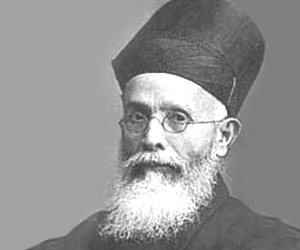skip to main |
skip to sidebar
 Lala Lajpat Rai, popularly known as "Punjab Kesari", was born on January 28, 1865 in Jagraon tehsil of the Ludhiana district, Punjab, in a Hindu Aggarwal family. His mother, Gulab Devi, came from a Sikh family. Lajpat Rai's family was far from affluent.
Lala Lajpat Rai, popularly known as "Punjab Kesari", was born on January 28, 1865 in Jagraon tehsil of the Ludhiana district, Punjab, in a Hindu Aggarwal family. His mother, Gulab Devi, came from a Sikh family. Lajpat Rai's family was far from affluent.
Lajpat Rai's interest in politics was aroused by his father who in his early life was a great admirer of Sir Syed Ahmed Khan but whom he condemned later for his anti-Congress tirade.
Lajpat Rai too had shared his father's admiration for Sir Syed Ahmed Khan but from 1888 began to criticize in his writings the anti-Congress activities of Sir Syed. Lajpat Rai's father was well-versed in Urdu and Persian, had great respect for Islam, fasted and prayed like a Muslim, but did not embrace Islam largely due to his wife's attachment to the Hindu and Sikh faiths. The Arya Samaj movement, a vital force in the Punjab in the later 19th and early 20th century, had a tremendous appeal for Lajpat Rai (he had met Swami Dayanand at fourteen), who came under its influence from his student days. It was his attachment to the Arya Samaj which led his father also to veer round to Hinduism.
Lajpat Rai's political activity began from 1885 when he joined the Congress session at Allahabad. In the early part of his political career, his interest was confined to social and educational reforms, but his views on politics changed radically as a result of the hasty and ill-conceived measures thrust on the country by Lord Curzon. He organised big meetings in the Punjab, travelled widely, raised funds for the national cause and exposed the poverty of the people and its causes. He brought out in his writings and speeches lurid comparisons between the economic conditions in India and those in the Western countries, and attacked the economic exploitation by the British as oppressive.
As the need for partition and independence took an important turn for the possible, Lajpat Rai’s involvement became imperative to the Indian Independence Movement. His actions in anti-imperialist movements led to numerous arrests. He became an important member of the Arya Samaj. This political group was full of British-educated Indians who believed that Hinduism had a specific and direct impact on what it meant to be Indian. The group also took the ideas of a merged western and eastern world and promoted the view that the subcontinent had benefited from its coagulation. The involvement of the Arya Samaj in constitutional reform supported the freedom movement which took hold of the Indian population. Lajpat Rai led political rallies which taught how the history of the subcontinent had always been heading to the philosophical idea that it would become an independent nation.[3]
Lajpat Rai presided over the first session of the All India Trade Union Congress in 1920. In 1923, he became a member of the Imperial Legislative Assembly. He also went to Geneva to attend the eighth International Labour Conference in 1926 as a representative of Indian labour. He had an opportunity to watch the labour movement in the USA and England where he was required to prolong his stay for political reasons.
In addition to espousing his philosophical principles, Lajpat Rai engaged heavily in direct action and protest against British rule. He led the Punjab protests against the Amritsar Massacre (1919), the Non-Cooperation Movement (1919 - 1922), and the “Simon go back” demonstrations against the Simon Commission (1928). He was repeatedly arrested.He disagreed, however, with Mohandas Gandhi’s suspension of the movement due to the Chauri Chaura incident, and formed the Congress Independence Party, which was particularly pro-Hindu in voice and policy.
He was not only a good orator but also a prolific and versatile writer. His journal Arya Gazette concentrated mainly on subjects related to the Arya Samaj. Bande Mataram and People, contained his inspiring speeches to end oppression by the foreign rulers. He founded the Servants of the People Society, which worked for the freedom movement as well as for social reform in the country. He also wrote an autobiography in English titled The Story of My Life. 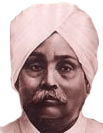
Lajpat Rai’s journey to the United States during World War I helped him to gather knowledge of how an independent nation formulates a nationalist identity. This is where he gathered information about how foreign nations, specifically Britain’s imperialist hold on India, had negative affects on the people, the lifestyles, and the ability to generate bonds with other nations. He wrote articles that persuaded foreign nations to side with the subcontinent’s struggle for independence. By accepting that westernized ideals were positive to the creation of nationalities, he gained support for breaking from Britain.[3] In Europeanization and the Ancient Culture of India, Lajpat Rai wrote that nationalization of India was imperative to spread western ideology to the rest of the world. Since the westernization of India had successfully been adapted while continuing traditions remained a large part of the culture, he believed that India no longer needed an overbearing imperialist government. He wrote that: “at first sight it seems absurd to give one name to all Indian civilization. But a close examination for facts and data amply proves the unity of Indian civilization, at least for the present geological period.” [4] These ideas were passed to foreign countries in order to show that despite cultural differences from the western world, India’s society had become a sustainable, functional nation which deserved its own nationality as opposed to being overseen by an alien western country.
Writings by Lajpat Rai include Josiah Wedgewood - The Man And His Work, The United States of America: A Hindu’s impressions and a study, History of the Arya Samaj, Swaraj and social change, England’s Debt to India: A historical narrative of Britain’s fiscal policy in India, The Problems Of National Education In India and Unhappy India: Being a reply to Katherine Mayo’s “Mother India”, published in 1928. (Mother India was a polemical account of India’s self rule by American historian Katherine Mayo.) Arya Smaj Life:
Lajpat Rai came early under the influence of the dynamic Hindu reformer, Dayanand Saraswati, the founder of the Arya Samaj. In conjunction with like minded people like Mahatma Hans Raj and Lala Sain Das, he was instrumental in laying the foundations of a strong Arya Samaj presence among the Punjabi Hindu urban populace. This was accomplished through the establishment of a network of schools and colleges (the Dayanand Anglo-Vedic (DAV) educational institutions) which met the aspirations of urban Hindu mercantile classes (Khatris, Aroras and Banias etc.) for an anglicized education leavened with traditional Hindu learning. These parochial institutions also served to spread the refomist message of the Arya Samaj during the late 19th century, a period when there was a fierce contest in the neighboring North Western Provinces (NWP, later renamed UP (United Provinces of Agra and Awadh, now called Uttar Pradesh) between the newly resurgent Hindi and Urdu for supremacy as the second official language after English. This debate spilled over to the Punjab, and Rai and the Arya Samaj were major players in it. Prior to the advent of the Arya Samaj on the Punjab scene, the urban Hindu Khatri and Arora communities enjoyed very cordial relationships with the Sikh communities. Dayanand Saraswati's intemperate attacks on the Sikh Gurus, and Rai's campaign for Hindi have caused schisms between the communities which still persist.

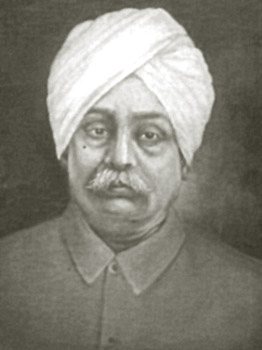
 Sukhdev (1907-1931) was a famous Indian revolutionary who played a major role in the India's struggle for Independence. He is amongst those great Indian freedom fighters who sacrificed their lives for the freedom of their country. His full name is Sukhdev Thapar and he was born on 15th May, 1907. His ancestral house is in Naughara Mohalla of Ludhiana city, Punjab, India. His father's name was Ram Lal. Since his childhood days, Sukhdev had witnessed the brutal atrocities that the Imperial British Raj had inflicted on India, which then led him to join the revolutionaries, vowing to set India free from the shackles of British dominion.
Sukhdev (1907-1931) was a famous Indian revolutionary who played a major role in the India's struggle for Independence. He is amongst those great Indian freedom fighters who sacrificed their lives for the freedom of their country. His full name is Sukhdev Thapar and he was born on 15th May, 1907. His ancestral house is in Naughara Mohalla of Ludhiana city, Punjab, India. His father's name was Ram Lal. Since his childhood days, Sukhdev had witnessed the brutal atrocities that the Imperial British Raj had inflicted on India, which then led him to join the revolutionaries, vowing to set India free from the shackles of British dominion.
Sukhdev Thapar was a member of the Hindustan Socialist Republican Association (HSRA), and organized revolutionary cells in Punjab and other areas of North India. A devoted leader, he even went on to educate the youth at the National College in Lahore, greatly inspiring them about India's glorious past. He along with other renowned revolutionaries started the 'Naujawan Bharat Sabha' at Lahore that was an organization involved in various activities, mainly gearing the youth for the freedom struggle and putting an end to communalism.
As a active participant of Lahore Conspiracy Case in 1928 and Prison Hunger Strike in 1929, Sukhdev shook the established foundation of British Government. On 1929, he along with his accomplice Bhagat Singh and Shivram Rajguru was arrested for assassinating Deputy Superitendent Saunder in 1928, thus avenging the death of Lalaji. The three brave revolutionaries were sentenced to death, as per the verdict, on March 23, 1931 and their bodies were secretly cremated on the banks of River Sutlej.
Sukhdev was a member of Hindustan Socialist Republican Association and took active part in various revolutionary activities. He along with other revolutionaries founded the Naujawan Bharat Sabha with the aim to aware and gear up Indian youth for the freedom struggle showing them an imaginary picture of India’s future.
Sukhdev Thapar was a Bharatiya revolutionary from Punjab. He was an active member of the HSRA, being one of its senior most leaders. He is known to have started study circles at the National College (Lahore), in order to delve into Bharat's past as well as to scrutinise the finer aspects of world revolutionary literature. Along with Bhagat Singh and others he started Naujawan Bharat Sabha at Lahore. The main aims of this organisation were to activate the youth for freedom struggle, inculcate a rational scientific attitude, fight communalism and end the practice of untouchability.
His letter to Mahatma Gandhi written just prior to his hanging, protesting against the latter's disapproval of revolutionary tactics, throws light on the disparities between the two major schools of thought among Bharatiya freedom fighters.



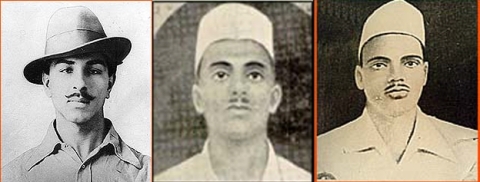
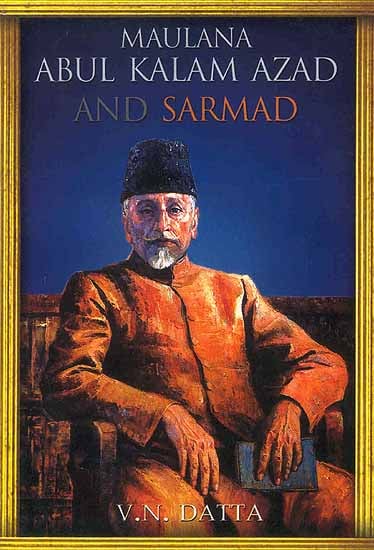



Born in Mecca on November 11, 1888, his father Maulana Khairuddin was a noted scholar, his mother Alia was an Arab, niece of Shaikh Mohammad Zahir Vatri of Madina. His father gave him the name of Feroze Bakht but he became Abul Kalam and the name stayed. At 10 he was well-versed in Quran. At 17 Abul Kalam was a trained theologian recognized in the Islamic world. His studies at Al Azhar University Cairo further deepened his knowledge. At Calcutta where his family had settled he started a magazine called ‘Lisan-ul-Sidq’. His early influences were Maulana Shibli Naomani and Altaf Hussain Haali, the two great Urdu critics.
Maulana Abul Kalam Muhiyuddin Ahmed was an Indian Muslim scholar and a senior political leader of the Indian independence movement. He was one of the most prominent Muslim leaders to support Hindu-Muslim unity, opposing the partition of India on communal lines. Following India's independence, he became the first Minister of Education in the Indian government. He is commonly remembered as Maulana Azad; he had adopted Azad (Free) as his pen name.
As a young man, Azad composed poetry in Urdu as well as treatises on religion and philosophy. He rose to prominence through his work as a journalist, publishing works critical of the British Raj and espousing the causes of Indian nationalism. Azad became a leader of the Khilafat Movement during which he came into close contact with Indian leader Mahatma Gandhi. Azad became an enthusiastic supporter of Gandhi's ideas of non-violent civil disobedience, and worked actively to organise the Non-cooperation movement in protest of the 1919 Rowlatt Acts. Azad committed himself to Gandhi's ideals, including promoting Swadeshi (Indigenous) products and the cause of Swaraj (Self-rule) for India. He would become the youngest person to serve as the President of the Indian National Congress in 1923.
Azad was one of the main organisers of the Dharasana Satyagraha in 1931, and emerged as one of the most important national leaders of the time, prominently leading the causes of Hindu-Muslim unity as well as espousing secularism and socialism. He served as Congress President from 1940 to 1945, during which the Quit India rebellion was launched and Azad was imprisoned with the entire Congress leadership for three years. Azad became the most prominent Muslim opponent of the demand for a separate Muslim state of Pakistan and served in the interim national government. Amidst communal turmoil following the partition of India, he worked for religious harmony. As India's Education Minister, Azad oversaw the establishment of a national education system with free primary education and modern institutions of higher education. He is also credited with the establishment of the Indian Institutes of Technology and the foundation of the University Grants Commission, an important institution to supervise and advance the higher education in the nation.
Azad developed political views considered radical for most Muslims of the time and became a full-fledged Indian nationalist. He fiercely criticised the British for racial discrimination and ignoring the needs of common people across India. He also criticised Muslim politicians for focusing on communal issues before the national interest and rejected the All India Muslim League's communal separatism. Azad developed curiosity and interest in the pan-Islamic doctrines of Jamal al-Din al-Afghani and visited Afghanistan, Iraq, Egypt, Syria and Turkey. But his views changed considerably when he met revolutionary activists in Iraq and was influence by their fervent anti-imperialism and nationalism. Against common Muslim opinion of the time, Azad opposed the partition of Bengal in 1905 and became increasingly active in revolutionary activities, to which he was introduced by the prominent Hindu revolutionaries Sri Aurobindo and Shyam Sundar Chakravarthy. Azad initially evoked surprise from other revolutionaries, but Azad won their praise and confidence by working secretly to organise revolutionaries activities and meetings in Bengal, Bihar and Mumbai (then Bombay).
Azad's education had been shaped for him to become a cleric, but his rebellious nature and affinity for politics turned him towards journalism. He established an Urdu weekly newspaper in 1912 called Al-Hilal and openly attacked British policies while exploring the challenges facing common people. Espousing the ideals of Indian nationalism, Azad's publications were aimed at encouraging young Muslims into fighting for independence and Hindu-Muslim unity. His work helped improve the relationship between Hindus and Muslims in Bengal, which had been soured by the controversy surrounding the partition of Bengal and the issue of separate communal electorates.
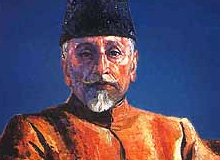


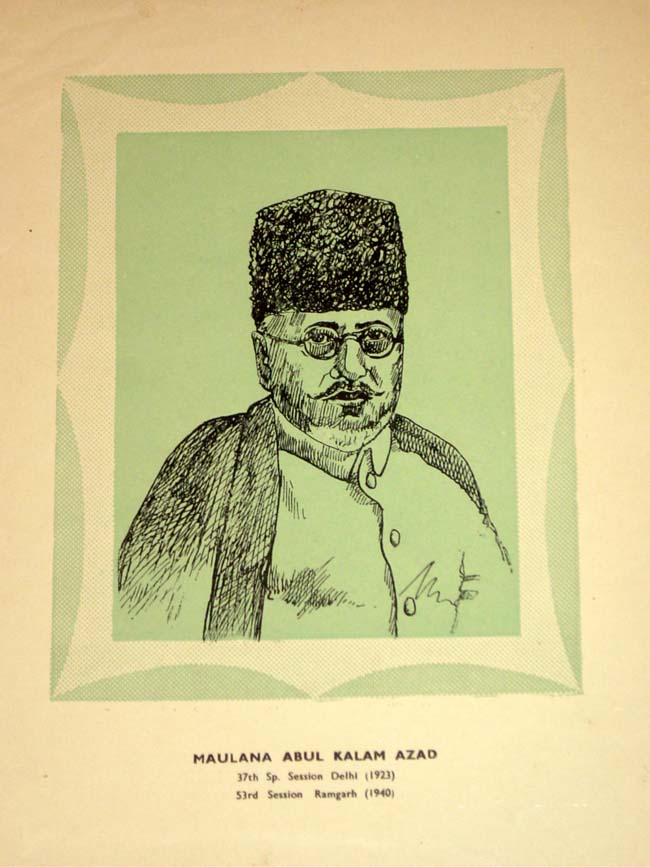
 Dadabhai Naoroji was born in Bombay in 1825. He was the son of a poor Parsi priest, who died when Naoroji was only four, but was educated through charitable grants at Elphinstone College in Bombay. As an adult he became interested in both politics and commerce, and this brought him to England in 1855. He subsequently spent more than half of his long life in England, and was president of the London Indian Society, which he set up in 1865.
He became a leading Indian nationalist, and a critic of British rule and its economic policy in India. Writing many papers including Poverty in India (1876) he argued that India' wealth was being drained away to England, thereby keeping Indians themselves in continual poverty.
Dadabhai Naoroji was born in Bombay in 1825. He was the son of a poor Parsi priest, who died when Naoroji was only four, but was educated through charitable grants at Elphinstone College in Bombay. As an adult he became interested in both politics and commerce, and this brought him to England in 1855. He subsequently spent more than half of his long life in England, and was president of the London Indian Society, which he set up in 1865.
He became a leading Indian nationalist, and a critic of British rule and its economic policy in India. Writing many papers including Poverty in India (1876) he argued that India' wealth was being drained away to England, thereby keeping Indians themselves in continual poverty.
Dadabhai Nauroji entered the political fray in 1852. He strongly opposed the renewal of lease to the East India Company in 1853. He sent petitions to the English government in this regard. But the British government ignored his pleas and renewed the lease. Dadabhai Naoroji felt that the British misrule of India was because of ignorance of the Indian people. He set up the Gyan Prasarak Mandali (Society for Promotion of Knowledge) for the education of adult menfolk. He wrote several petitions to Governors and Viceroys regarding India's problems. Ultimately, he felt that the British people and the British Parliament must be made aware of India's plight. In 1855, at the age of 30 he sailed for England.
In England, Dadabhai Naoroji joined several learned societies, delivered many speeches and wrote articles on the plight of India. He founded the East Indian Association on December 1st, 1866. The association was comprised of high-ranking officers from India and people who had access to Members of the British Parliament. Dadabhai Naoroji was elected to the British Parliament in 1892 from Central Finsbury as the Liberal party candidate. He got a resolution passed in British Parliament for holding preliminary examinations for the I.C.S. in India and England simultaneously. He also got the Wiley Commission, the royal commission on India expenditure, to acknowledge the need for even distribution of administrative and military expenditure between India and England.
Dadabhai Naoroji was instrumental in the establishment of the Indian National Congress founded by A.O. Hume in 1885. Thrice he was elected to the post of the President of the Indian National Congress, in 1886, 1893 and in 1906. During his third term, he prevented a split between moderates and extremists in the party. The Congress' demand for swaraj (self-rule) was first expressed publicly by him in his presidential address in 1906. Dadabhai Naoroji believed in non-violent and constitutional methods of protest. He died at the age of 92 on June 30, 1917.
